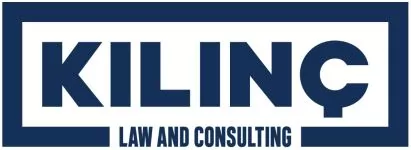INTRODUCTION
In the modern business landscape, one of the frequently encountered issues that raises concerns regarding its resolution is the protection of ideas. An idea may emerge in the context of an innovation associated with a venture or within the framework of a work of art. From an economic and competitive standpoint, the protection of such innovative ideas is crucial for safeguarding the interests of the idea's owner. Consequently, entrepreneurs, while seeking investors, need to implement various measures to ensure protection against the potential theft of their ideas.
The works protected under Law No. 5846 on Intellectual and Artistic Works (“LIAW”) are explicitly outlined in the statute. This article will evaluate whether ideas are protected under LIAW and examine the legal remedies frequently utilized by entrepreneurs in practice.
A. EVALUATIONS UNDER THE LAW ON INTELLECTUAL AND ARTISTIC WORKS
Under Article 1/B of the LIAW, a “work” is defined as an intellectual and artistic product. For a material to qualify as a work under LIAW, it must meet two conditions: (i) it must embody the “personal attributes of its author” and (ii) it must fall within one of the categories of works specified by the law. In other words, the work must reflect the author's personal characteristics and skills through an original and creative form of expression. This indicates the presence of originality rather than mere novelty. Regarding the concept of “personal attributes,” the work must not be created by everyone and must be relatively independent of other works.
The other requirement is that the work must fall within one of the categories specified by LIAW. Under LIAW, there are four distinct categories of works: scientific and literary works, musical works, fine arts, and cinematic works. These categories are regulated according to the principle of numerus clausus (limited number). In other words, the intellectual product created must be included within one of the types of works enumerated by LIAW.
LIAW grants authors two distinct types of rights: moral and economic. The moral rights include: (i) the right to public presentation, (ii) the right to be identified as the author and to have their name mentioned, (iii) the right to prevent alterations to the work, (iv) the right to access the original work, (v) the right to display the work, and (vi) the right to prevent its destruction. These moral rights cannot be transferred or subjected to transactions between living individuals or posthumous dispositions. However, the authority to exercise moral rights may be transferred to another party.
Economic rights are stipulated under Article 20 and subsequent provisions of LIAW, can be transferred and subjected to legal transactions. These rights are absolute rights that allow the author to exclusively benefit financially from the work. Each economic right under LIAW is distinct and provides the owner with separate control over that right. Consequently, the transfer of any single economic right to a third party does not imply the transfer of all rights. The economic rights are as follows: (i) the right to adaptation, (ii) the right to reproduction, (iii) the right to distribution, (iv) the right to representation, (v) the right to public communication via signs, sounds, and/or images, and (vi) the right to remuneration and enforcement. Additionally, economic rights may be inherited after the author's death. Unlike moral rights, economic rights are time-bound. According to Article 27 of LIAW, the protection period for economic rights lasts for the duration of the author's life plus 70 years after their death. In cases where there are multiple authors, this period is limited to 70 years following the death of the last surviving author.
B. PROTECTION OF IDEAS
As previously discussed, the LIAW protects only intellectual and artistic works, not abstract “ideas” by themselves. Therefore, the criteria for protection under LIAW focus on concrete works rather than mere ideas. Essentially, intellectual property rights are designed to protect tangible products or works. An idea that has not been realized, does not meet the criteria for a work, and lacks a physical form—essentially, a mere “thought”—is not covered under LIAW. Consequently, a business concept, start-up idea, or artistic notion that has not yet developed into a form reflecting the creator's personal attributes will not be considered a work and thus will not receive protection under LIAW.
As previously explained, the lack of protection for ideas under the LIAW constitutes a risk factor for start-ups undergoing investment rounds, innovators, and entrepreneurs seeking investment in the modern business world. This is because individuals are required to disclose their ideas to convince investors to invest, despite not yet having a tangible product. It is evident that these individuals' ideas need protection, yet no protection mechanism is available under LIAW for such ideas..
In this context, although neither LIAW nor other relevant regulations provide a direct protection mechanism, there are practical methods used in practice. One such method is the Non-Disclosure Agreement (“NDA”), also known as a confidentiality agreement. An NDA is typically signed before commencing joint business activities or collaborative work to protect the mutual interests of the parties and ensure the continuity of the process. It aims to maintain the confidentiality of business secrets and plans/processes by preventing their disclosure without the parties' consent. Therefore, signing an NDA before sharing any ideas serves as a notable method for protecting the idea in question.
Another method involves the formal documentation of the idea through a notary. In this approach, the idea owner can formalize their idea, project, or proposed work in writing, and then have it notarized. Although such notarization does not guarantee absolute protection of the idea, it provides the principal rights holder with a means of proof in cases of unauthorized use or infringement by third parties.
C. CONCLUSION
In conclusion, the scope of elements protected under the LIAW is clearly defined, covering only works and not mere ideas. According to the criteria established by LIAW, for an idea to be classified as a work and thus protected, it must reflect the personal characteristics of its author and fall into one of the specified categories of works. However, ideas that have not yet materialized or acquired physical form are not eligible for protection under LIAW. This creates a significant gap, particularly for innovative ideas and entrepreneurs.
In this context, confidentiality agreements and notarized documents provide a degree of protection for ideas and offer security in commercial relationships. However, these methods also have certain limitations and costs. Therefore, it is crucial for idea owners to employ effective protection mechanisms within the existing legal framework and to act with awareness in this regard.
The content of this article is intended to provide a general guide to the subject matter. Specialist advice should be sought about your specific circumstances.




